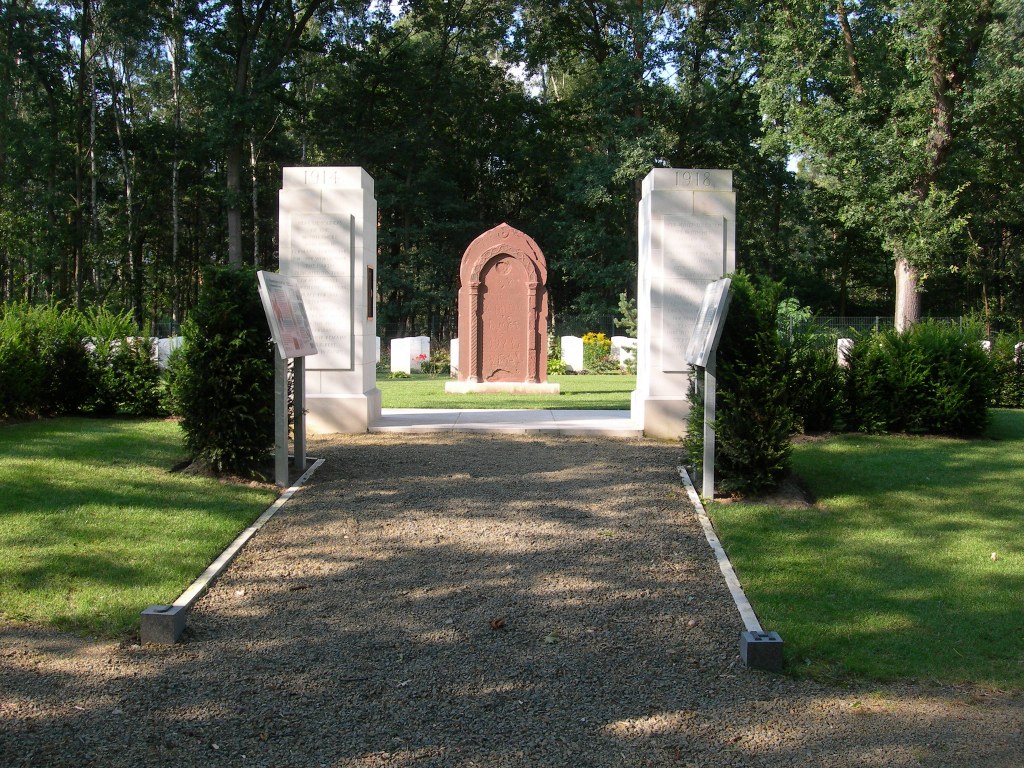Zehrensdorf Indian Cemetery
- Country Germany
- Total identified casualties 206 Find these casualties
- Region Brandenburg
- Identified casualties from First World War
- GPS Coordinates Latitude: 52.17299, Longitude: 13.50275
BAck from destruction
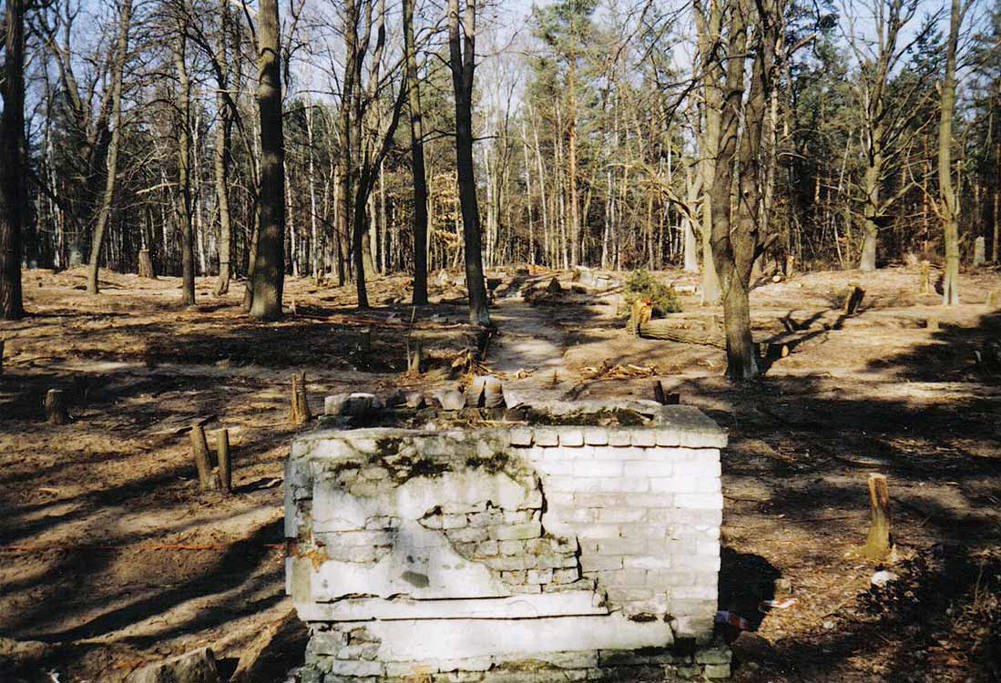
Zehrensdorf Indian WAR CEMETERY
Location: Wünsdorf, Germany Language: German Altitude: 76m Rainfall: 591mm
Temperature: -8°c - 28°c Biggest challenge: Cemetery destroyed by tanks
Secluded in quiet woodland, next to an abandoned Soviet-era military base, 15 miles south of Berlin, lie the graves of 206 Indian servicemen of the First World War. Dotted between each headstone is a small burst of colour from the spread of flowers that are synonymous with our work.
Visitors would be forgiven for thinking Zehrensdorf Indian War Cemetery had always been this way.
But when the Iron Curtain lifted in the 1990s the Commission was faced with a disaster zone. A World War and a Cold War had destroyed the war cemetery. Not one headstone was left standing.
Almost nothing remained of the peaceful space that had been created to remember these men.
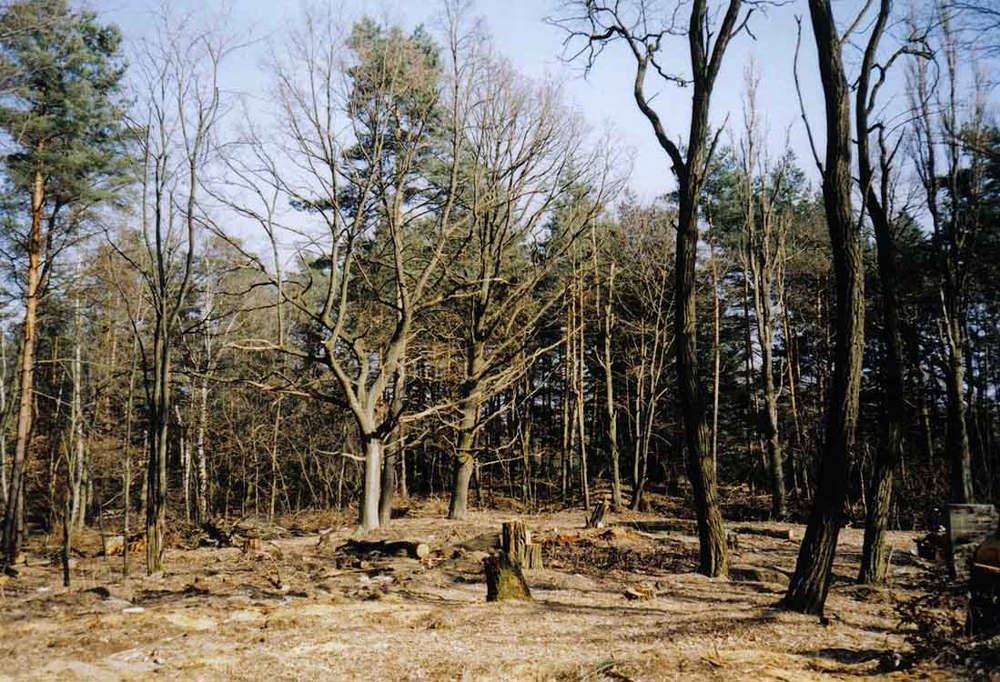
After the fall of the Berlin Wall, CWGC returned to Zehrensdorf to find it completely destroyed.
These Indian servicemen died while prisoners of war, captured by the Germans on the Western Front.
They were held at two camps at Zossen-Zehrensdorf which included large numbers of Allied PoWs of African and Asian descent. They were ‘show camps’ with better conditions than others and included the German Empire’s first mosque built especially for the Muslim prisoners. Many prisoners were then the focus of studies by curious anthropologists, keen to research the international mix of captives.
After the war, the Commission formalised the Indian cemetery at Zehrensdorf which formed part of a larger cemetery containing allied war dead of the First World War.
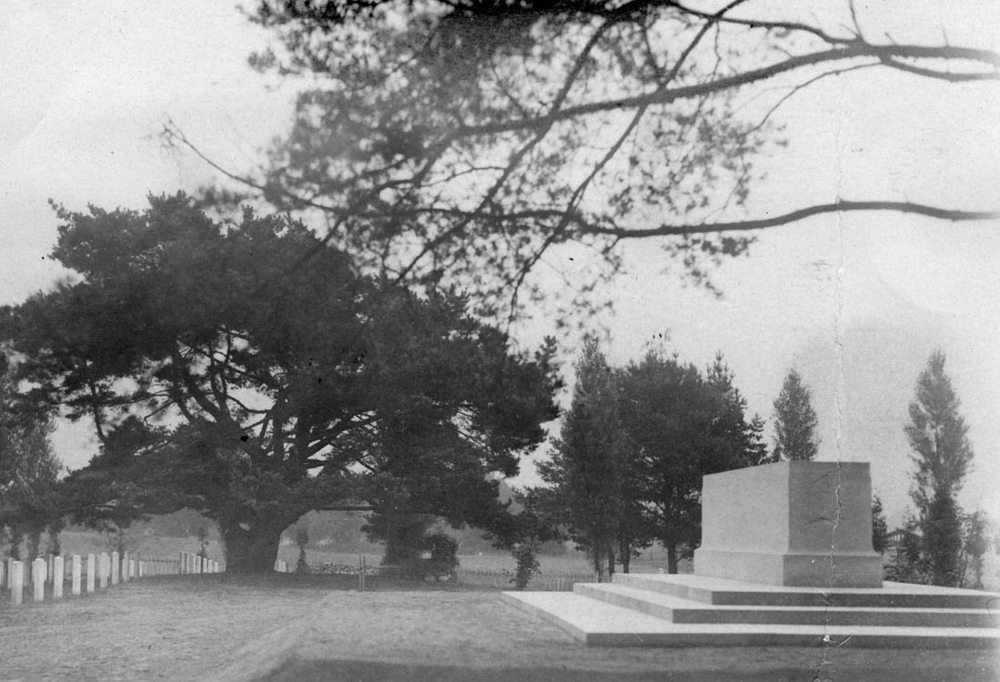
The original cemetery as it appeared before the Second World War.
Old visitor books from the cemetery in the 1930s show the local fascination with these men from far-off lands continued between the wars, though comments were increasingly accompanied by Nazi sentiments.
By the time the Second World War had drawn to a close, the Commission hoped it might be possible to return. But a new Cold War between East and West soon put an end to those hopes. We were only able to return long enough to find out that it was already damaged.
Held firmly behind the Iron Curtain staff were unable to gain proper access.

Despite damage from tanks using the ground for training, the headstone beams and graves below were undisturbed.
When they eventually returned after the Fall of the Berlin Wall they found the site had been all but wiped off the face of the Earth. But, underneath the overgrowth and debris, in spite of tanks using the area for training exercises, the beams that once held headstones were somehow intact.

Before repairs at Zehrensdorf could begin, unexploded ordnance had to be safely removed and the area cleared.
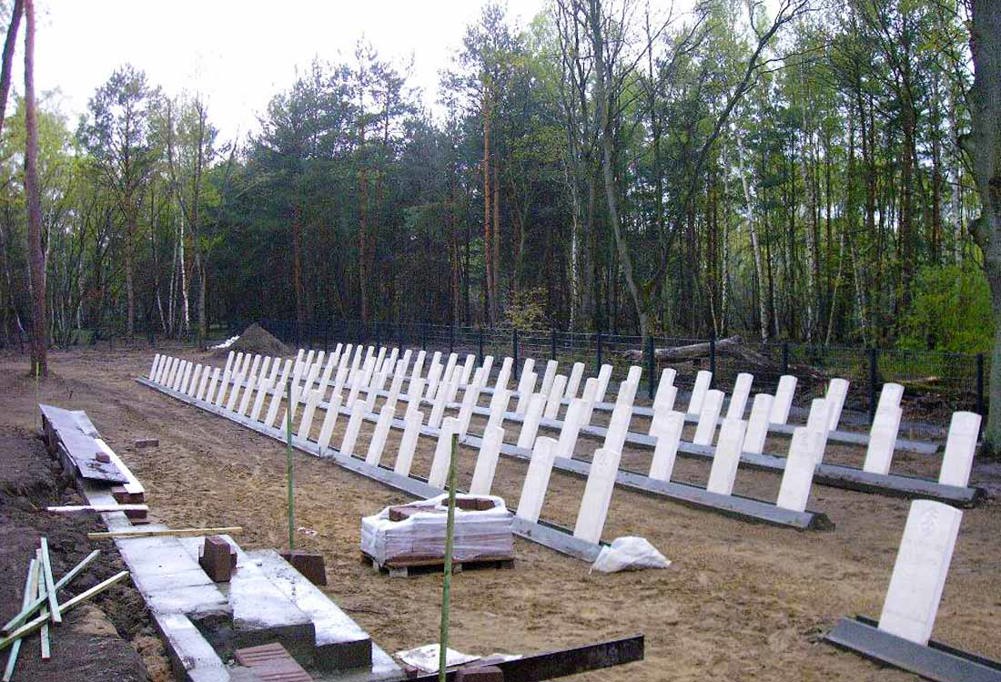
Brand new white Portland headstones replaced those that had been destroyed.
One by one, once the area had been cleared of explosives, we were able to assure ourselves that no human remains had been affected. Each grave could still be marked in its original position. New headstones were produced, and great efforts were taken to ensure everything was replaced exactly.
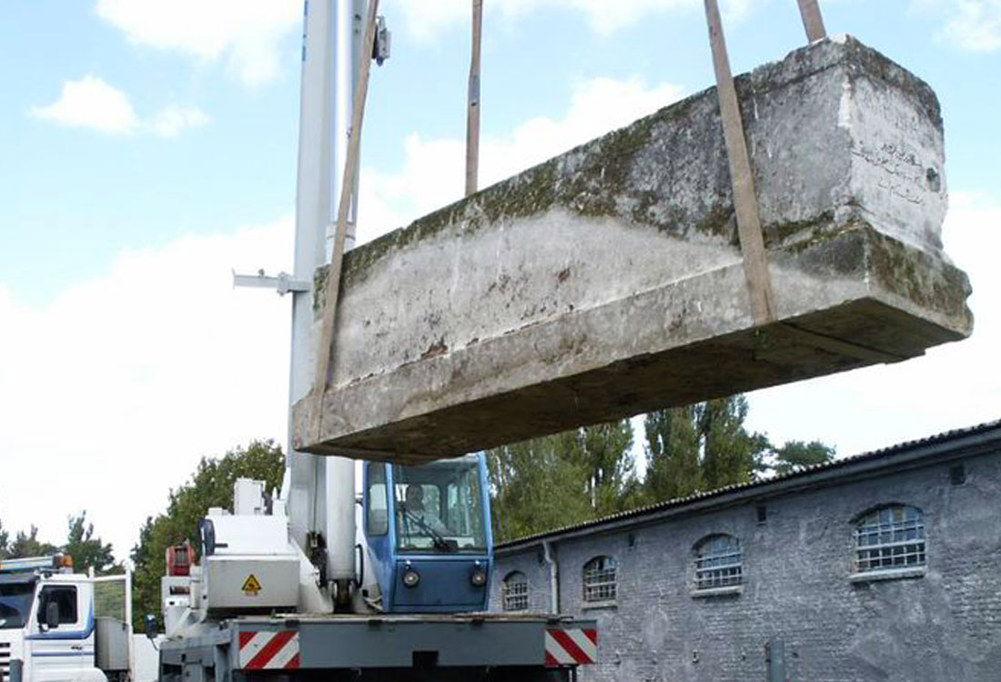
The old damaged Stone of Remembrance was donated to a nearby museum.

The final piece in the restoration was installing a brand new seven-tonne Stone of Remembrance.
The final, heavy, piece of the puzzle was installing a brand new Stone of Remembrance – all seven tonnes of Portland stone. The only evidence that remains of the damage is the original Stone of Remembrance, preserved at a nearby museum.
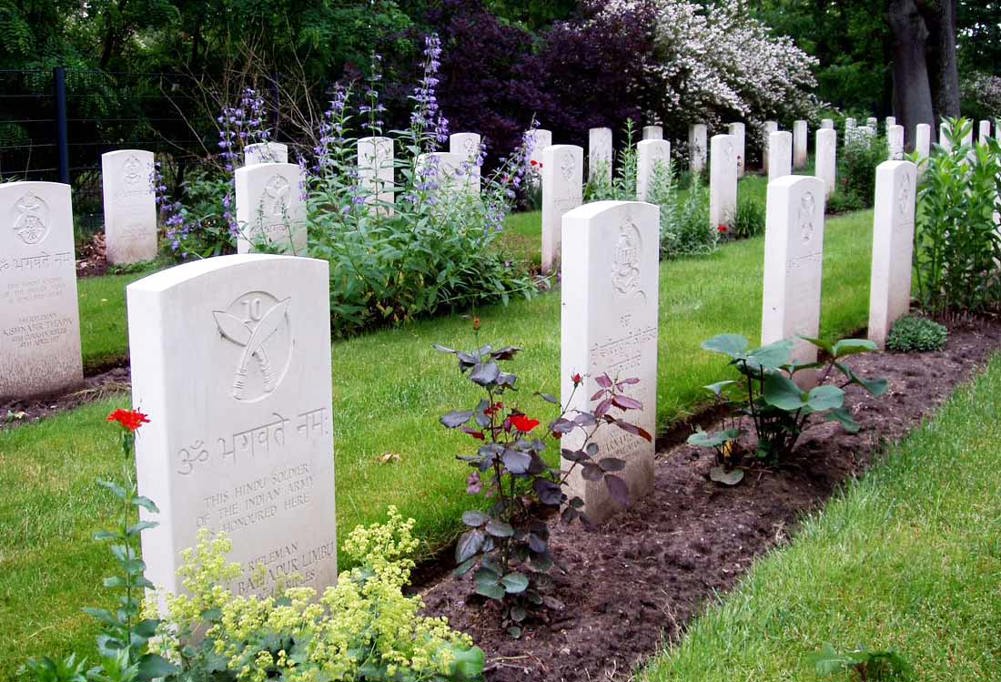
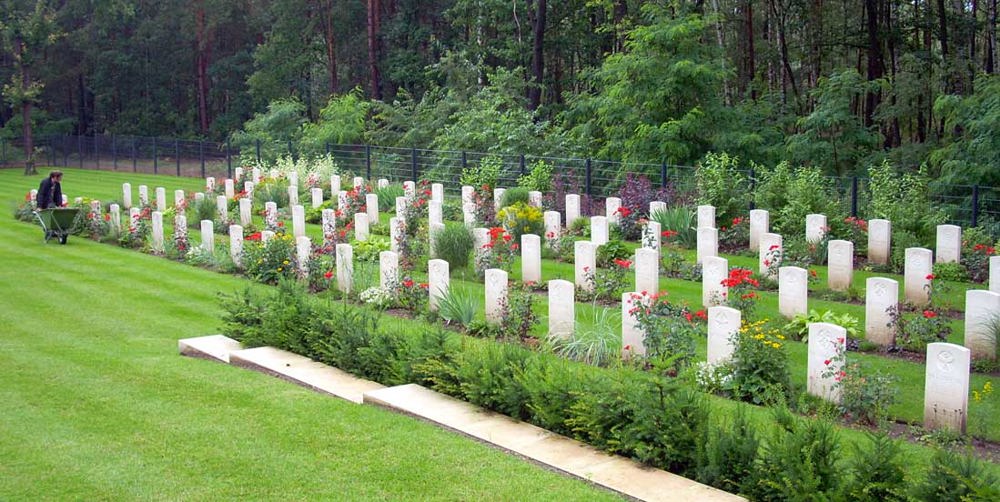
Zehrensdorf Indian Cemetery, post reconstruction, once again filled with colour.
Location information
The village of Zossen is in the east of Germany approx 50kms directly south of Berlin.
From the A10 BERLINER RING take Exit 12 (Ausfahrt 12) B96 RANGSDORF / ZOSSEN.
Follow the signs for B96 ZOSSEN, continue for approx 12kms into the village of Zossen and turn right, keeping on the B96 direction LUCKAU / BARUTH.
Continue for a further 6kms through the village of Wünsdorf and turn left onto the L74 TEUPITZ / WALDSTADT (also signposted for Kriegsgäberstätte). This road is called HAUPTALLEE.
Continue for approx 2.5kms and turn left where signposted Kriegsgäberstätte.
After approx 500m the cemetery can be found on the right.
The cemetery address is:-
Kriegsgäberstätte
Hauptalle /L74
15806 Wünsdorf
Germany
GPS Location is:-
N 52 10 22
E 13 30 09
Visiting information
Winter opening hours:
November to April, from Tuesdays to Sundays from 10:00 to 17:00 hours.
Summer opening hours:
May to October, from Tuesdays to Sundays from 10:00 to 19:00 hours.
History information
Zehrensdorf Indian Cemetery contains the graves of 206 soldiers and sailors of the forces of undivided India who died during the First World War at a prisoner-of-war camp three miles away at Zossen.
From the end of the Second World War to the early 1990's the land on which the cemetery is located was occupied by Russian forces for training purposes. As the Commission was unable to maintain the cemetery during this period, the casualties buried here were instead commemorated by name on special panels erected at the Indian memorial at Neuve-Chapelle in France.
Following the re-unification of Germany in 1990 the Commission began the restoration of the cemetery which was completed in 2005.


